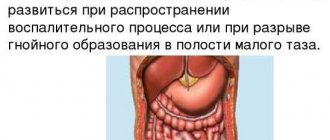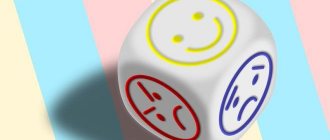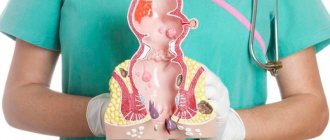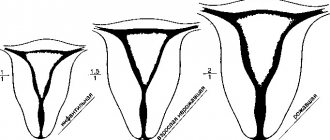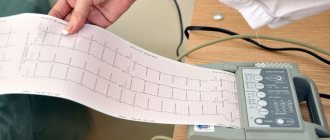Hello dear readers. Many of us have various kinds of fears, but there are those that at first glance seem unthinkable and far-fetched to us, but this is not so. A phobia is a mental disorder accompanied by unreasonable fear. It is common for a person to be afraid of something if a situation or circumstance threatens life or puts us in danger. However, a phobia is a fear that has no rational basis.
Scientists count more than 40 thousand phobias, and their number is only growing every year. Some are afraid of ghosts, some are afraid of heights, others are terrified at the sight of insects. But there are also the most unusual fears, for example, trypophobia.
What is trypophobia, how does it manifest itself, what symptoms indicate the presence of a mental disorder, and how to deal with this illness, you will learn in this article.
All photos that can cause an attack of trypophobia, so as not to harm you, I hid under spoilers! Open and look at these photos only if you are sure that they will not harm you!
What is trypophobia and who are trypophobes?
The term "trypophobia" comes from gr. τρύπα - hole and φόβος - fear. That is, in simple words, it is a fear of holes. Although this phobia is not classified as a type of mental disorder, about 16% of people on the planet suffer from the disease.
Trypophobes experience overwhelming horror and disgust at the sight of a cluster of small holes on something. To understand how developed this fear is in a person, you need to have a trypophobic experience. For example, true trypophobes, when they see cluster holes (a collection of holes and bumps on any surface), experience anxiety, disgust and irrepressible fear. Some develop a panic attack, and even a catatonic stupor.
Today, scientists are actively studying the topic of trypophobia, conducting numerous studies and tests that help people with a fear of holes overcome unpleasant sensations.
What is the most common cause of hole phobia?
Trypophobia in humans is caused by intolerance to any kind of holes and openings. Unfortunately, this disorder is much more serious than one might think. Trypophobes are afraid of anything that may contain many holes: coffee foam, pasta, honeycombs. A striking example of disgust for trypophobes is the seemingly harmless lotus fruit. The presence of round holes causes disgust and anxiety in people.
Even biological materials can cause fear and nausea in trypophobia sufferers. These include human skin (pores, for example), trees, insects and even stones, rocks with pronounced cluster holes.
The most severe case is the fear of holes in food. People suffering from trypophobia react especially negatively to waffle cakes, pancakes, cheese, cucumbers, strawberries, and even citrus fruits. Any hint of a cluster of holes will immediately turn you away from using the product.
Photo of a honeycomb.
Historical roots of trypophobia
In fact, every person, to one degree or another, experiences a dislike for a large accumulation of holes and holes. But healthy people who are not susceptible to trypophobia can easily switch their attention to other details. A trypophobe will not be able to stay in the place where his phobia was identified. He will want to leave the room or place as soon as possible.
Previously, scientists assumed that the fear of holes was inherent in humans by their ancestors. They explained the gene for fear of the accumulation of holes simply: the bodies of dangerous animals, for example, the octopus, posed a direct threat to our ancestors. Spiders and sea creatures had round holes on their bodies. Therefore, even an ordinary person may experience discomfort at the sight of some animals.
Scientists from the University of Essex have established a direct connection between pathogenetic fear. People have an instinctive tendency to reject certain visual images that could previously cause harm to health. We associate objects that cause fear in trypophobia with spots on the surface of the dermis, which are present in most poisonous animals and insects.
Therefore, we inherited from our ancestors a kind of instinctive mechanism: to feel disgust at the sight of such objects. However, such a genetic property can be aggravated by traumatic circumstances and cause a pathological fear of any kind of holes.
There is also another hypothesis for the appearance of trypophobia. It is connected with the work of our brain. According to this theory, we associate cluster holes with infectious diseases or the consequences of skin trauma.
For example, a wasp sting automatically causes an allergic reaction to the insect's venom in a person. The skin becomes blotchy and we can clearly see enlarged pores. Knowing that this is accompanied by pain and discomfort, we subconsciously avoid everything that could cause us harm. The same applies to the consequences of a disease such as measles. The skin becomes covered with pimples, and the holes are clearly visible. This, perhaps unconsciously, leads us to the conclusion that many holes are a possible health hazard.
Trypophobia in the modern world
To date, the medical association does not classify trypophobia as a type of disease. Cluster hole phobia is not a medical condition. However, this does not mean that phobias are not studied by researchers, scientists and psychologists.
Unfortunately, the phobia presented is also not given due attention. And all because there are not so many people with pronounced symptoms. Despite such circumstances, England is actively studying the issue of trypophobia and conducting tests at universities to study the human psyche.
Photo of cells.
Preventative techniques
It is not possible to prevent the development of trypophobia, but it is quite possible to reduce it to minimal manifestations. To do this you need to follow the following rules:
- Whenever possible, try to avoid situations that may cause stress.
- Learn to control your own emotions and switch your attention at the right moment.
- Take up yoga or meditation practice.
These actions are not a salvation from the development of a pathological fear of holes, but there will definitely be no harm from these manipulations.
At the first manifestations of trypophobia, the best solution would be to consult a doctor.
Information belongs to the website Rev-Med.info
Related posts:
- Panic disorder with agoraphobia The onset of a panic attack is often associated with the fear of getting into...
- Constant fear and anxiety in women Almost all people have experienced feelings of anxiety and fear at least once...
- Can temperature change due to stress? The human body reacts to stress in a variety of ways. Many people are interested in maybe...
- Is mental disorder treatable? By mental disorder, experts usually understand a special mental state that interferes with...
Symptoms of trypophobia
As I wrote above, many people feel a slight dislike when they see holes. Even the accumulation of larvae, worms, or anthills can cause us anxiety and anxiety. We will want to leave the place where the hidden threat or unpleasant picture is located. But with trypophobes everything is much more complicated.
The first symptoms of trypophobia
Recognizing them is not so difficult. The main thing is to realize that such a problem really exists. The disorder can be identified by observing two elements, namely:
- Visual perception of clusters. Directly when you see an unpleasant image near you;
- Bodily sensations, i.e. the feelings you experience when visually examining an object.
The brain of trypophobes, when they see holes, immediately gives a signal to their internal systems about the onset of danger. Symptoms of this condition are accompanied by:
- Rapid breathing. Shallow and rapid breathing indicates that a person is wary of clusters;
- Tachycardia. A person may experience rapid increases in blood pressure and rapid heartbeat;
- Lack of oxygen. The trypophobe begins to breathe deeply in order to “breathe”;
- Often, such people begin to rapidly sweat and dry out their mouths. This is another important sign of trypophobia.;
- Nausea. A more serious symptom is the onset of nausea, which in some cases may be accompanied by vomiting. By the way, this reflex was conceived by nature for a reason. A person frees himself from everything unnecessary so that it is easier to escape from danger.
One has only to see something cellular and a person will immediately feel uneasy.
The most obvious symptoms of fear of holes
- Itching on the body. First, the patient begins to scratch his neck (the most vulnerable place), then his arms, and his torso. The itching does not stop for a long time, which in turn causes nervousness and irritability;
- Dizziness. Due to lack of oxygen, a trypophobe may experience clouding in the head. Black spots often appear in the eyes, which also cause hostility and fear in the patient. This may lead to fainting;
- Panic attack. In this case, the trypophobe may behave inappropriately, try to hide from the holes, hide in a corner and cry. A panic attack can manifest differently for each person. Some take a passive position and experience horror alone, while others show aggression and rage.
Most often, the consequences of trypophobia are accompanied by a rash on the skin and hands. After encountering cluster holes, the patient may notice red spots on the body on a bodily level. But over time, they go away without the use of any medications or ointments.
All symptoms can be combined, or just one may appear.
Trypophobia - a disease or fear?
The term “trypophobia” appeared not so long ago - in 2005. It comes from two Greek words: “trypo” - stamping, drilling and “fobos” - fear. This is a relatively new phobia, which has not yet been recognized by official medicine and which, according to statistics, affects about 10% of the world's population. The clinical picture largely depends on the individual’s personal qualities and level of empathy.
This phobia manifests itself as nervous tremors, dizziness, nausea, vomiting, loss of coordination, itchy skin and a general feeling of discomfort. Most often, during acute attacks, at the sight of any object of trypophobia, trembling occurs on the skin, the heart rate increases and breathing becomes difficult.
Objects of fear in trypophobia are: holes in any living organisms, including animal and human tissues:
- acne on the skin, acne, enlarged pores, wounds on the skin, openings of various glands and others; - holes in food products, incl. honeycombs, holes in cheese, vegetables and fruits, bread, etc.; - holes in various plants, for example, in corn, bean pods, seeds; - holes in rocks and fossils; - holes that arose as a result of the vital activity of living organisms (caterpillars, larvae, worms and others).
Types of fear of hole congestion
Today, there are two types of trypophobes. This aspect should be discussed in more detail to make it easier to diagnose the type of disease in the future.
Cutaneous trypophobia
This type of patient cannot tolerate bodily harm. Trypophobia on the body is probably one of the most unpleasant types of fear, as a person experiences panic, horror, nausea and disgust at the sight of:
- Acne or various types of pimples on the body;
- Sebaceous glands and wide open pores;
- Scars left after acne;
- Necrosis of the dermis.
It is not possible for a trypophobe to withstand all these physical circumstances. Considering that skin problems, to one degree or another, occur in all people, trypophobes have a hard time. Moreover, some patients even narrow their social circle and prefer homework to group work. With such asociality, the help of a specialist is necessary. I will describe below who you should contact.
Photo of a hand.
Cluster trypophobia
This type includes all other types of holes. These include:
- Food products (bread, buns, coffee, pasta, etc.);
- Sponge algae;
- Some types of flowers and seeds, as well as trees;
- Tunnels that were created naturally by insects or animals.
One way or another, with cluster trypophobia, a person can avoid meeting potential danger. That is, the patient may not buy scary products, not look at them in the store (although sometimes this can be difficult), and avoid wild nature.
Photo of a porous chocolate bar.
Causes of trypophobia
Fear of holes is one of the most poorly understood phobias. The exact reasons for its development have not yet been established, but scientists have been able to determine that hole phobia is based on the strength of associations. Holes are associated with disease, rot, decomposition, injury, danger, infection.
Another theory is that one part of the brain is responsible for the emotional response to the cluster of holes. In some people (10–20%), this department is slightly more developed, and therefore these people are at risk.
According to the third theory, we inherited the fear of holes from our distant ancestors. In primates, abscesses and wounds on the body signal that larvae have appeared under the skin. In exotic countries, people risk becoming victims of insects that use humans as an incubator. All this makes you afraid of holes at the genetic level (fear that they are dangerous, that someone lives there, etc.).
According to recent studies by American scientists, aversion to holes is based not on fear, but on disgust and disgust. Therefore, in the United States, such a diagnosis as trypophobia does not officially exist. Researchers are confident that hostility is caused by associations, and not by specific brain function or a genetic factor.
Less commonly, the phobia trypophobia is caused by personal trauma and associations. For example, a child was attacked by a swarm of bees, now any cluster of holes is associated with honeycombs, and those with danger and pain.
This is interesting! Some researchers call trypophobia not a fear or a disorder, but an unconscious reflex reaction.
Causes of phobia of holes and holes
The main researchers of the strange mental reaction to multiple holes, Arnold Wilkins and Jeff Cole, noted that the term “phobia” does not accurately explain the patient’s condition. The opinion of psychologists has come down to the fact that they do not see fear in this disease, but rather disgust and disgust.
If you type “What is trypophobia” or “Trypophobia test” on the Internet, you will be asked to watch a thematic video series on cluster holes. Any footage that graphically depicts hands in honeycombs or wide holes on the hands, face, and body in general will cause disgust and hostility even in a mentally healthy person.
Postmodern artists painted hands and bodies riddled with holes and worms, which looks more like a sick fantasy of the author than an aesthetic artistic masterpiece. And here the question arises by itself: what comes first – multiple holes that cause fear or such images created by someone’s fevered imagination?
It is worth noting that researchers at the University of Essex also identified signs of trypophobia. Thus, from the proposed pictures, where both cluster holes and other images were presented, they noted that the first made them feel disgusted, but the second did not.
British scientists interpret trypophobia as an “evolutionary gene” that we inherited to help us survive the sight of poisonous animals and insects.
Photo of a honeycomb.
Trypophobia on human skin
Due to insufficient knowledge of the fear of a large number of small holes, many myths and rumors arise around it. For example, someone started a rumor that trypophobia on the body is a disease that affects a person’s skin, causes holes in the skin, abscesses, tears, and supposedly the disease destroys parts of the body. And these rumors are supported by photographs created using Photoshop. They depict and retouch individual parts of the body (holes in the human body or skin are superimposed on healthy parts) or depict body parts with wax makeup (most often on the palm).
It is important! Trypophobia is not a somatic disease; it does not affect the human body. Any physical discomfort is caused by self-hypnosis.
Stages of trypophobia
Of course, this is a mental problem. Accordingly, help needs to be provided to overcome this unmotivated fear. Today there are three types of trypophobia:
- Light form. When a person sees an object of fear, he begins to get nervous and experience anxiety, for example, looking at chocolate or coffee foam;
- Medium shape. In this case, the patient experiences persistent disgust, nausea, and sometimes itching may begin;
- Severe form. A person experiences unbridled fear, leading to a panic attack. Semi-fainting and fainting conditions may also occur.
In any case, with mild or severe trypophobia, you need to take measures to alleviate your condition.
Don't be afraid to see a doctor!
Prevention of fistulas
Not all diseases can be prevented, especially fistulas, which complicate the course of purulent paraproctitis. However, it is possible to adequately treat the diseases that lead to paraproctitis - hemorrhoids and fissures, and this is precisely what will prevent the formation of fistulas.
Complicated childbirth cannot be prevented, but high-quality and timely obstetric care, attentive attention to the woman and a thorough postpartum examination are available preventive measures.
The high incidence of post-radiation tissue damage and fibrosis progressing over time forced oncologists to abandon high doses of radiation therapy and even change approaches to the treatment of malignant tumors of the genital area.
Particular importance is attached to the correct choice of method of surgical treatment of diseases of the hollow organs and adequate management of the postoperative period.
In our clinic, a complicated course of the disease is very rare, because we not only know about prevention methods, but also actively use them.
Book a consultation 24 hours a day
+7+7+78
Bibliography:
- Shelygin Yu.A., Blagodarny L.A. /Handbook of coloproctology// -M.: Litterra; 2012.
- Becker A., Koltun L., Sayfan J. /Simple clinical examination predicts complexity of perianal fistula// Colorectal Dis.; 2006; 8.
- Gaertner WB, Hagerman GF, Finne CO, et al. /Fistula-associated anal adenocarcinoma: good results with aggressive therapy// Dis Colon Rectum; 2008; 51.
- Genadry RR, Creanga AA, Roenneburg ML, Wheeless CR /Complex obstetric fistulas // Int. J. Gynaecol. Obstet.; 2007; Vol. 99; Suppl. 1.
- Ommer A., Herold A., Berg E. / S3-Leitlinie: Rektovaginale Fisteln (ohne M. Crohn) // Coloproctology; 2012; Vol. 34.
- Sahni VA, Ahmad R., Burling D. / Which method is best for imaging of perianal fistula?// Abdom Imaging.; 2008; 33.
- Zoulek E., Karp DR, Davila GW/ Rectovaginal fistula as a complication to a Bartholin gland excision // Obstet. Gynecol.; 2011; Vol. 118; N 2.
How to Diagnose Cluster Hole Fear
Considering that today it is impossible to diagnose “trypophobia” due to its not being included in the medical classification of diseases, the disease is classified as obsessive-compulsive disorder. Accordingly, diagnosis and treatment are the same as recovery methods for other types of phobias.
Today, the diagnosis of the condition is carried out by a psychotherapist or psychologist. The only difference is that the first has the right to prescribe drug therapy in the form of sedatives and stronger drugs, while the second does not have such powers.
It depends only on your symptoms which specialist is preferable to go to. However, it should be noted that even with a severe stage of the phobia, taking pills does not guarantee complete relief from the disease. In this case, it is better to find a good specialist who can correctly diagnose your condition and prescribe competent therapy.
Photo of a cellular plant.
Methods for treating fistulas
Fistulas rarely close on their own; this can only be hoped for by creating favorable conditions, for example, limiting and partially controlling the movement of feces through the rectum using cleansing enemas. In the vast majority of cases, conservative therapy is ineffective; the only radical treatment is surgical, that is, excision of the pathological area, including reconstruction of the missing tissue.
Technically simple surgical intervention, including endoscopic, and a hundred surgical modifications cannot cure about half of the patients who suffer from relapses. It is especially difficult to achieve success with intestinal and urinary fistulas, since they are always contaminated with microflora. In some cases, it is necessary to resort to the formation of an intestinal stoma, temporarily stopping the movement of feces through the pathologically changed area of the intestine for several months.
In isolated cases, they resort to “old-fashioned methods” of treatment with scraping the mucous membrane of the tract, burning it with chemical reagents and enzymes, achieving sticking of the walls. Better results - in approximately 50% - are achieved by introducing fibrin glue into the fistula tract, which glues the walls together.
Tampons made of biomaterials act similarly to glue, sealing the internal opening; emptying of the passage can cause the walls to stick together and close the fistula.
Until now, the role of antibiotics in the treatment of fistulas caused by inflammation has not been determined, since drugs are not able to penetrate into the infiltrate due to massive scar changes. However, with fistula tracts due to Crohn's disease, specific drug therapy is mandatory and not unsuccessful.
Surgery for fistulas using the LIFT method
Should fear of holes be treated?
A person must answer this question for himself. It is advisable to treat a phobia if it interferes with life, causes discomfort and life seems hopeless. I have already written above about the stages of trypophobia. But as practice shows, even with a mild form of phobia, not only the mood, but also life in general deteriorates.
If you feel that you cannot ignore the smallest details that you associate with clusters, it is better to consult a psychologist. This is a sure sign that you yourself cannot cope with obsessive fear.
Symptoms of appearance
The process of fistula formation is difficult to track; it can take several days, as happens with acute pancreatitis, or several months, as with post-radiation tissue changes.
Manifestations at the initial stage of fistula formation are due to its root cause, as a rule, a local inflammatory process resulting in purulent melting of tissue with pain and infiltration, often intoxication and fever.
Without an exacerbation of the inflammatory reaction, the fistula can be felt as a cord. The size of the compaction around the fistula tract is due to inflammatory infiltration and branching of the fistula tracts themselves, cicatricial changes in the surrounding tissues, previously involved in the inflammatory conglomerate.
A formed fistula has an entrance and, sometimes, an exit, the tissues around it are compacted, and discharge can be squeezed out of the hole: pus, bile, pancreatic juice, and so on. With a fistula, feces may leak from the intestine into the vagina from the genital organs; when there is an anastomosis of the intestine with the bladder, urine leaks from the anus. The discharge from the intestinal fistula has a fecal smell, and the purulent secretion from the vagina also has a specific smell. The smell of a discharged fistula, leading from the zone of disintegration of a malignant tumor, seems especially heavy to others.
Inflammation causes pain ranging from slight discomfort to unbearable pain. Tumor fistulas do not hurt because they form inside a disintegrating tumor.
When the infection activates with the formation of streaks of purulent contents, a general reaction occurs: intoxication, high temperature, sweating and pallor, palpitations and rapid breathing.
Treatment of trypophobia
Any psychological and mental illness does not have a single therapeutic program. Each patient is individual, and the approach to solving the problem is selected taking into account the person’s medical history. There are currently three types of treatment for trypophobia. Let's look at them in more detail.
Pharmacological.
Accompanied by taking sedatives, antihistamines or stronger drugs. Drug therapy is justified only if the patient experiences bodily sensations (itching, dizziness, loss of consciousness). This therapy is aimed at quickly relieving the symptoms of trypophobia, but is not curative.
To reduce the severity of cephalgia of psychogenic etymology and attacks of headaches, short-term courses of anxiolytic drugs, such as benzodiazepine tranquilizers, are used.
For mild symptoms of trypophobia, it is important to prescribe sedatives to improve the patient’s sleep. If the phobia is accompanied by seizures or convulsions, the doctor has the right to prescribe anticonvulsants.
The pills are aimed at relieving symptoms, not treating.
Psychotherapeutic
The work of a psychologist is to normalize the patient’s mental state by conducting a psychotherapeutic course. In this case, there is no clear method of the session, since the psychologist creates the course, taking into account the patient’s condition.
One proven practice is to reduce the symptoms of a panic attack. The patient is offered a series of pictures that evoke peace and aesthetic feelings. Along with inspiring images, the psychologist also shows the object of the patient's fear, and then again calming fragments. Gradually, the specialist increases the duration of display of cluster images, replacing them with pleasant pictures. The presented technique includes proper breathing.
When seeing both images, another trigger begins to go off in the patient’s head: “it’s not as scary as it seems.” The results of such sessions are truly fascinating. Most trypophobes experience a decrease in the intensity of their anxiety reactions, and also gain control over their own behavior.
Perhaps the best way to overcome trypophobia.
Hypnosis treatment
Sometimes a destructive thinking program is so deeply embedded in the psyche that it is not possible to identify it in a waking state. Hypnosis techniques are used to treat panic attacks and aggressive conditions. What is its essence?
Sometimes a person himself cannot truly understand the reason for his fear. Unreasonable worries can be identified in the subconscious, which is impossible to reach in wakefulness. The specialist reduces the control of a person’s consciousness, plunging him into a hypnotic trance, after which he corrects the “plan” of the subconscious.
During a natural half-asleep state, a hypnologist can reveal the true mechanisms of progression of trypophobia. In this state, the hypnologist instills a motivating attitude to eliminate defective thinking structures and introduces a new, constructive model of behavior.
Hypnosis can sometimes help.
World research on trypophobia
To this day, scientists and psychologists debate how serious trypophobia is. Some believe that this is an obsession, others that it is a mental disorder. But in order not to scare all people, signs of trypophobia in a person are a normal phenomenon.
If you, for example, look at skin eaten away by worms, this will automatically cause rejection and hostility in you. So there is no need to be ashamed of this circumstance. What looks unpresentable, ugly or disgusting causes an understandable reaction in our brain.
Trypophobes, on the other hand, experience an irrational fear of any kind of holes. This is the main feature of the disease. Worldwide research on trypophobia is currently being actively conducted by scientists and psychologists. Despite the fact that there is a category that suffers from this phobia, it is impossible to find a single treatment method.
The human psyche is individual. Some course will be useful for one patient, but not for another. Therefore, a competent psychologist works with the patient individually.
Photo of coral.
Types of disease
Since trypophobia as a disease was discovered recently, its varieties continue to be carefully studied. As a rule, doctors identify the following forms of mental disorder:
- mild, in which the trypophobe experiences anxiety and nervousness;
- moderate, characterized by signs of nausea, itching and trembling;
- severe, characterized by panic syndrome, dizziness and vomiting.
Trypophobia prevents a person from functioning normally in the world around him. It often provokes misunderstandings, smirks, and open hostility on the part of work colleagues, friends, or unfamiliar people. No matter how incomprehensible this disease may seem, people who have this disease should be treated with complete respect. Information belongs to the website Rev-Med.info
Trypophilia is the opposite of trypophobia
Indeed, today there is an unofficial name for another deviation opposite to trypophobia - trypophilia. In this case, a person, on the contrary, experiences a craving for all sorts of clusters of holes, both on the body and on other surfaces. This is also a kind of psychological addiction. A person, looking at lotus fruits or honeycombs, not only does not feel disgust, but, on the contrary, contemplates them and, if possible, even picks at the holes. The phobia of holes gives way to dependence on holes.
Both trypophobia and trypophilia are not normal conditions for humans. The severe stage of tripophilia involves self-harm. Some people deliberately pick holes on their bodies and enjoy the look of them. So, both phobia and addiction have a destructive effect on a person’s outlook and life as a whole.
Photo of a manicure with cells.
Types of fistulas
The classification of fistulas is diverse; each organ has its own gradation of fistulas by location, sometimes the degree of involvement of surrounding tissues, and even by the volume of secretion released through the fistula.
Complete fistulas have an external and internal opening, incomplete fistulas have only an internal opening.
Those opening in the skin are called external fistulas, while fistulas connecting organs are called internal .
Depending on the number of organs involved in the process, internal fistulas can be combined or isolated . Isolated fistulas are named after the organ that gave rise to them: pancreatic, biliary, intestinal, vaginal, ureteric, and so on.
When there is an anastomosis of two or more organs - a combined type of fistula - a “combined” name is used, so with a fistula between the rectum and the vagina - rectovaginal fistula, with a fistula from the gallbladder to the stomach - cholecystogastric fistula, between the pancreas and the stomach wall - pancreatogastric or pancreas-gastric fistula.
According to the number of tracts, fistulas are divided into single-channel or simple and multi-channel or complex , as well as branched or indirect and unbranched or direct .
According to the condition of the tissues and course - infected or complicated fistulas, as a rule, purulent and “clean” uninfected or uncomplicated fistulas with the release, for example, of bile or pancreatic juice.
| Depending on the number of holes | Complete fistulas | They have two openings - they connect two organs to each other or one organ to the surface of the skin. |
| Incomplete fistulas | They only have one hole. | |
| Depending on the location of the second hole (for complete fistulas) | Internal fistulas | Connects internal organs. |
| External fistulas | Connect internal organs to the surface of the skin. | |
| Depending on the number of organs involved | Isolated fistulas | They are named after only one organ that gave rise to the fistula. |
| Combined fistulas | Two or more organs are involved. | |
| Depending on the course of the fistula | Single channel (simple) | One fistula tract. |
| Multichannel (complex) | Several fistula tracts. | |
| Branched (indirect) | There is a branching of the fistula. | |
| Unbranched (straight) | No ramifications. | |
| Depending on the presence of complications | Uncomplicated (uninfected) | There are no signs of infection. |
| Complicated (infected) | There are signs of an infectious process in the fistula. | |
| Depending on the current | Primary | The fistula was discovered for the first time. |
| Recurrent | The process either subsides or reactivates: inflammation develops, new fistula tracts appear or old ones open. |
Fistulas are divided into primary and chronically occurring - recurrent , when the process either subsides or becomes inflamed again with the formation of new passages and, sometimes, the closure of old ones.
A rectal fistula is classified in relation to the anal sphincter, and fistulas that are localized above the anus and go around it like a horseshoe, with an opening into the rectum, are also graded according to 4 degrees of complexity.
Complete pancreatic fistulas can be small with the release of up to half a glass of juice, medium - up to 700 milliliters and large.
There are as many classification options as there are types of fistulas in human nature.
Books about trypophobia
Today there is a lot of psychological literature that helps people get out of difficult situations or look at their lives from a different “angle.” To date, no books have been published about trypophobia, although the work of experts in the field of psychology has improved significantly.
Still, trypophobia is a rather rare disease, but, nevertheless, it deserves no less interest, since ordinary people suffer from unmotivated fear. If you clearly understand that you have such a phobia, then the best way to get acquainted with the possible causes is to visit the office of a psychologist or psychotherapist.
And know that any mental circumstance necessarily has a basis. Despite the fact that the psyche does not hurt, like, for example, the stomach or head, it needs healing. Consider that this is another organ of ours that needs to be monitored and cared for.
What specific images and objects evoke fear?
Not every photo of holes or seeing them in reality leads to horror in trypophobics. For a picture to be scary, it must meet several criteria:
- the holes should be located asymmetrically;
- be small;
- There must be a contrast between the inner surface of the passage and its outer frame.
In the photo below, you can see how the processing of the picture deprives it of its trypophobic nature. What's on the right is a trypophobic drawing, what's on the left shouldn't be scary anymore.
